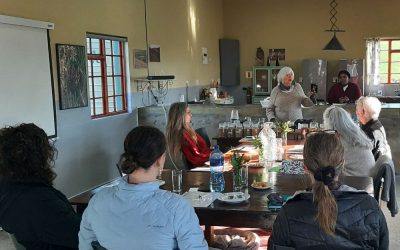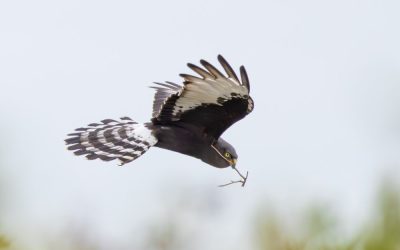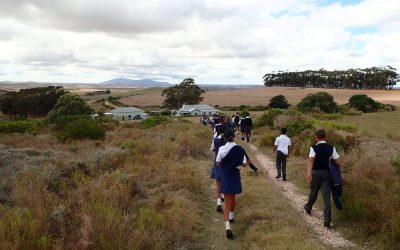The first Wild & Wise Retreat at Haarwegskloof Renosterveld Reserve unfolded under a soft winter sun during a June weekend.
OVERBERG RENOSTERVELD TRUST
Meet the aardwolf: A small but mighty termite-eater
The aardwolf is a fascinating nocturnal mammal that spends its days resting in a burrow and emerges at night to forage. Though it belongs to the hyena family, the aardwolf (Proteles cristata) is much smaller and has a vastly different diet. Unlike its carnivorous relatives, the aardwolf primarily feeds on termites, specifically on Trinervitermes species. In fact, it relies so heavily on these insects that their presence is essential to its survival within an ecosystem.
Fun fact: An aardwolf can consume up to 105 million termites annually!
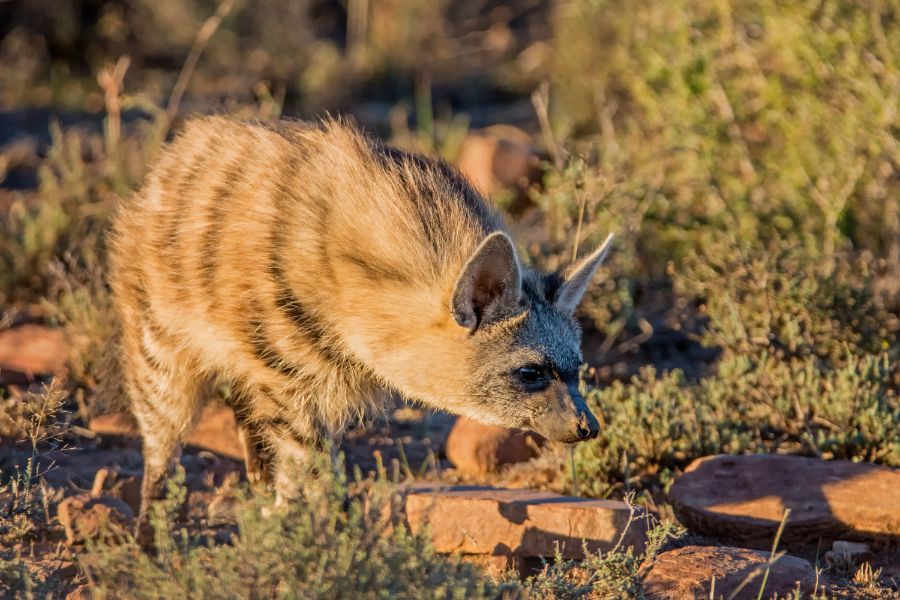
Above: The aardwolf, a termite specialist in the hyena family.
Discovering middens: Hygiene over territory
Aardwolves have long been resident in the Overberg region, including at the Haarwegskloof Renosterveld Reserve. Recently, we were fortunate to gain some insight into their secretive behaviour. While out walking, a guest noticed what appeared to be a midden (a collection of scats from a single species), often used either for marking territory or simply for hygienic reasons. On closer inspection, the scats appeared to contain termite remains, significantly narrowing down the possible culprit.
Curious, I set up a camera trap at the site, even though the scats seemed old, suggesting the midden hadn’t been recently visited. To my surprise, within the week, the camera captured footage of an aardwolf returning to the site and depositing fresh scat. Aardwolf scats are surprisingly big for an animal of its size – reaching approximately 5 cm in diameter, or around 8% of the animal’s body weight per deposit.
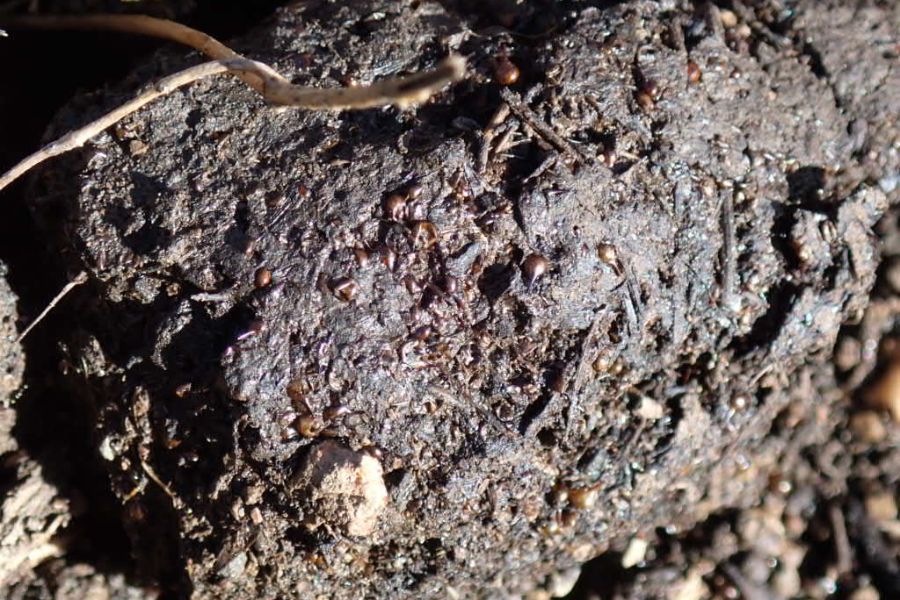
Above: Aardwolf scat filled with termites.
Aardwolves bury their droppings
This explains why the scats on the surface appeared old. Unlike some other species, aardwolves don’t use their scats for territorial marking. Instead, they keep middens to maintain hygiene in their foraging areas.
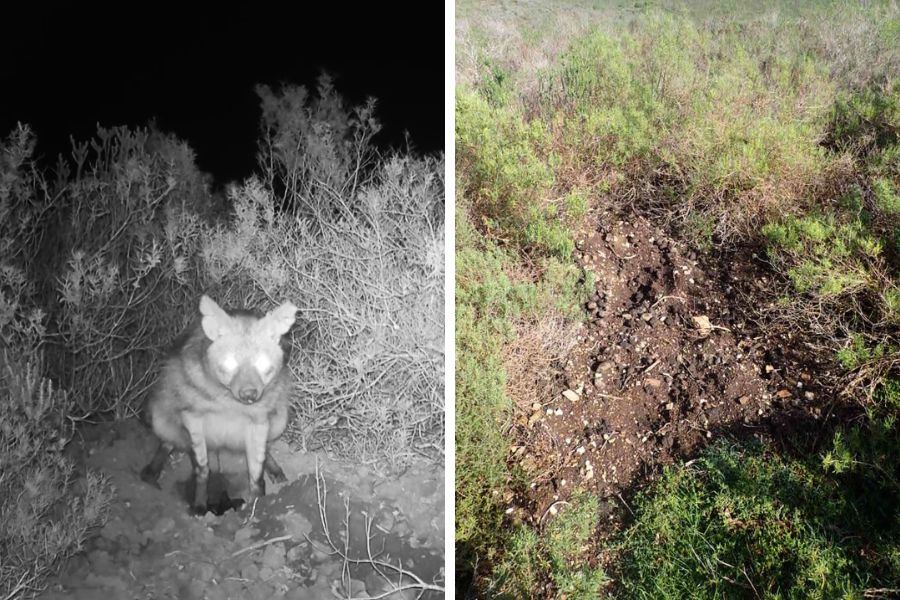
Above: Camera trap reveals aardwolf using a midden.
Marking territory with scent: The art of pasting
Yet aardwolves are territorial, and they have their own unique method for marking boundaries. This behaviour was also captured, by chance, on another camera trap placed elsewhere on the reserve.
Like other hyenas, aardwolves produce a strong-smelling secretion from their anal glands, which they use to mark vegetation. The anal gland is located between the tail and the rectum. It has a muscular lining, allowing the animal to squeeze it outward while performing scent marks. They squat over a branch or grass stalk with the extruded anal gland and perform a distinctive rear-end wiggle to smear a small amount of brownish paste onto the object. This scent-marking behaviour is known as “pasting”.
Each paste acts like a chemical message, conveying detailed information such as the individual’s sex, age, reproductive status, or simply a warning that the area has already been foraged.
These pastings are typically found along the periphery of their territories, especially at frequently used trails or boundary landmarks. Aardwolf territories can range from 100 to 600 hectares, usually shared by a monogamous pair and their most recent offspring. Aardwolves may travel up to 12 kilometres per night while foraging and they will paste between 10 and 20 times per kilometre.
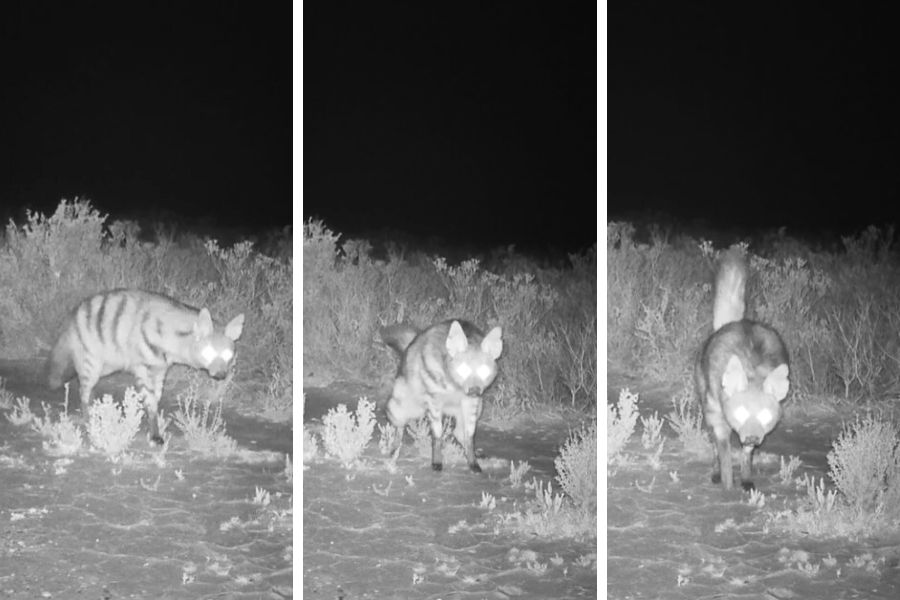
Above: Aardwolves use pasting to communicate and mark territory.
Understanding the secret lives of aardwolves
The aardwolf’s unique behaviours – from its termite-focused diet to its distinctive scent-marking rituals – highlight the incredible adaptations that allow this small hyena to thrive in its environment. Observing these shy nocturnal creatures, especially through camera traps, provides a rare window into their lives and deepens our appreciation for their role in the ecosystem.
As guardians of the Overberg’s biodiversity, understanding aardwolves helps us better protect these fascinating mammals and the habitats they depend on.
Whether you’re a wildlife enthusiast, researcher, or casual observer, the aardwolf’s story is a reminder of nature’s remarkable diversity and the subtle ways animals communicate and coexist.
Our sincere thanks to WWF South Africa and World Land Trust for making it possible for us to capture these moments, by providing funding for our special projects. A special thanks to Ecological Logistics for their advice on choosing the best camera trapping equipment to suit our needs.
Latest Renosterveld News
Critical renosterveld site acquired by the ORT – a breeding hotspot for Endangered Black Harriers
In the heart of South Africa’s Overberg, a stretch of Endangered Eastern Rûens Shale Renosterveld is now under conservation protection.
Nature comes alive for farm kids on Haarwegskloof
Our Environmental Education programme, called the Veld School, offers hands-on learning experiences that connect children to the land. It’s held on our Haarwegskloof Renosterveld Reserve.
What we do
ORT © 2012 – 2025 | Trust no IT851/2012 • PBO no 930039578 • NPO no 124-296






